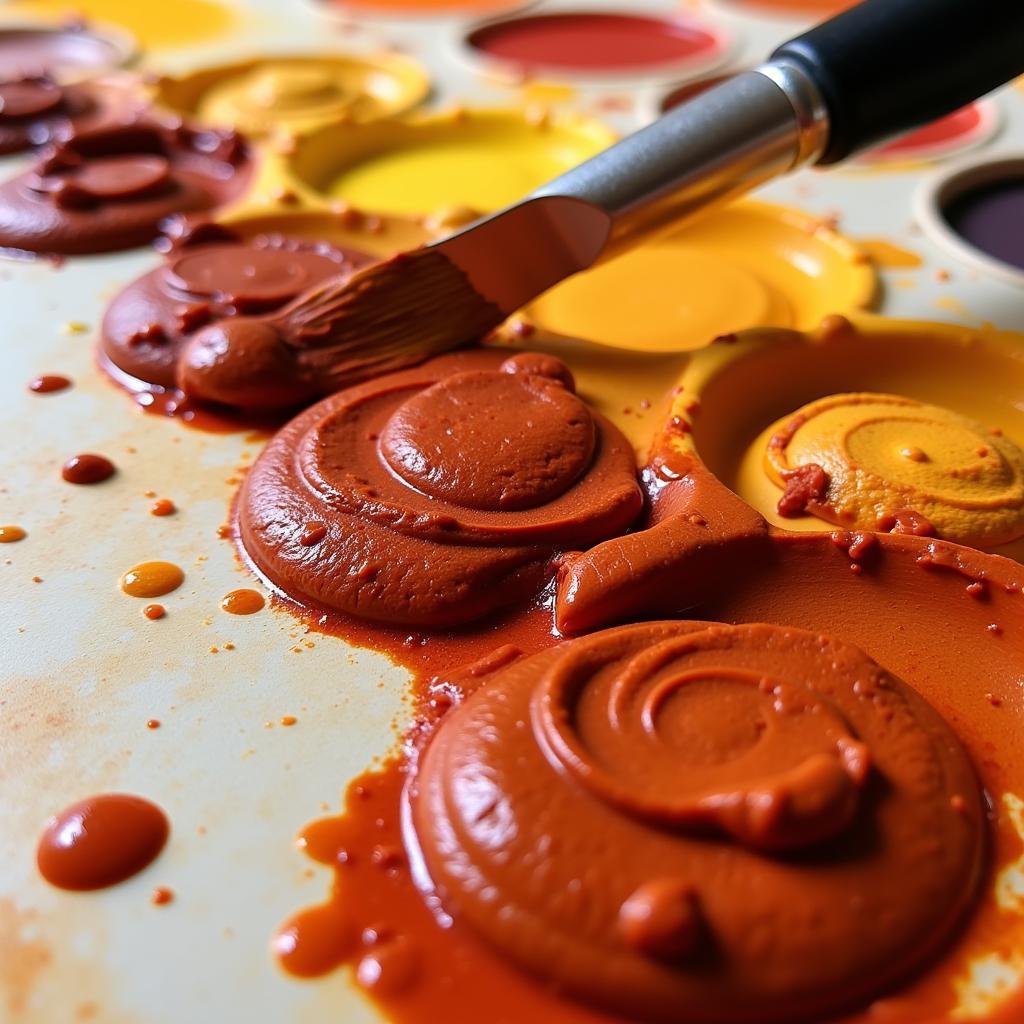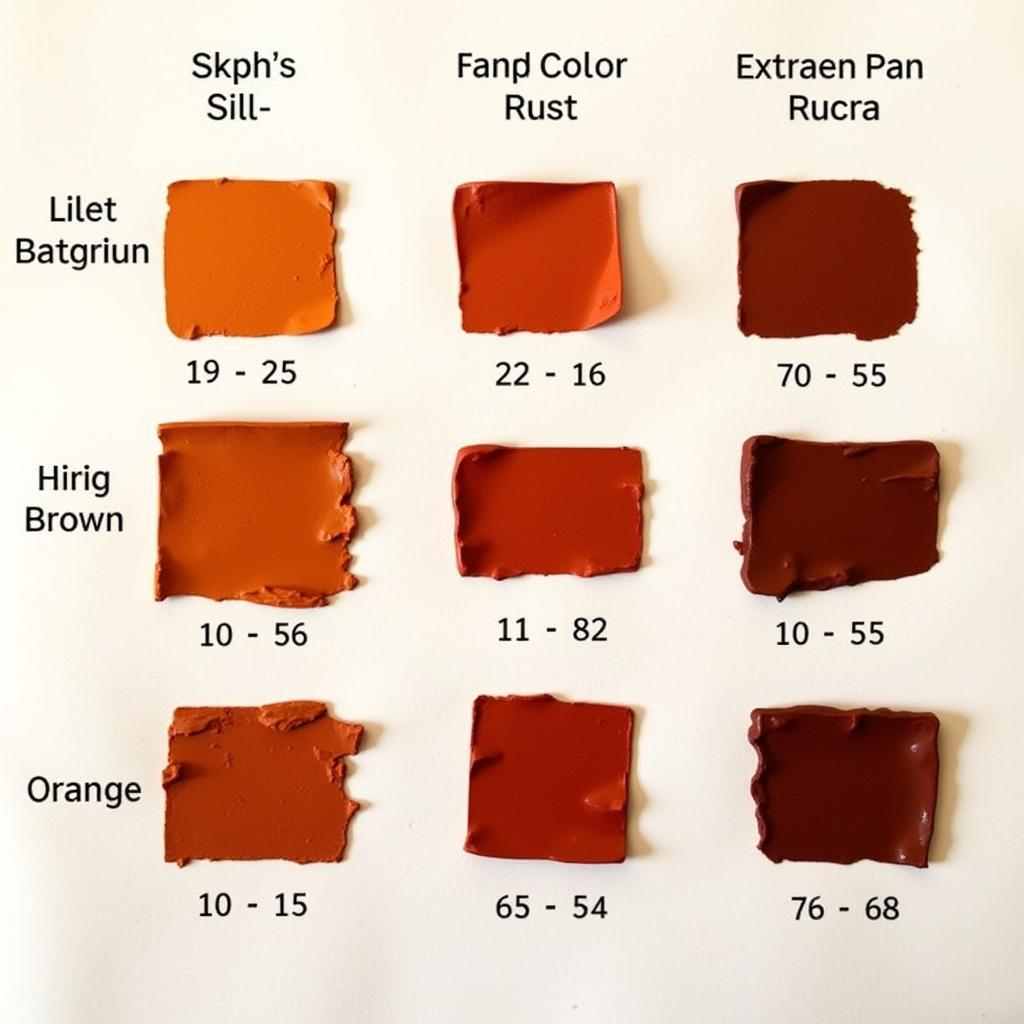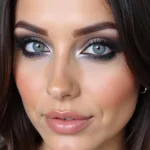Creating the perfect rust color with paint can transform your project, adding a touch of rustic charm and weathered elegance. Whether you’re aiming for the vibrant orange of fresh rust or the deeper, more subdued tones of aged metal, achieving the desired hue involves understanding color theory and mixing techniques. This guide will equip you with the knowledge and skills to confidently mix your own rust color paint, allowing you to bring your creative vision to life.
Thinking about a fireplace mantel update? Check out some ideas for what color to paint fireplace mantel.
Understanding the Components of Rust Color
Rust, chemically known as iron oxide, displays a range of colors from bright orange to reddish-brown, depending on the oxidation level. To mimic this naturally occurring process with paint, we need to break down the color into its core components: red, yellow, and brown. The proportion of each color will determine the final shade of rust you achieve.
Mixing the Perfect Rust Color: A Step-by-Step Guide
- Start with a Base Color: Begin with a reddish-brown or burnt sienna acrylic or oil paint. This will serve as the foundation for your rust color.
- Add Yellow: Gradually introduce small amounts of yellow paint to your base color. Cadmium yellow or a similar warm yellow works well. Mix thoroughly after each addition. Observe how the color shifts towards a brighter orange.
- Incorporate Brown: To deepen the rust color and add complexity, incorporate a touch of dark brown paint, such as burnt umber. This will help create the illusion of depth and age.
- Adjust and Refine: Continue adjusting the proportions of yellow and brown until you achieve your desired rust shade. Remember to test the color on a scrap piece of material before applying it to your final project.
- Adding Texture (Optional): For a more realistic rust effect, consider adding texture mediums to your paint. Coarse sand or texture paste can create a rough, textured surface reminiscent of real rust.
 Mixing Rust Colored Paint
Mixing Rust Colored Paint
Exploring Different Shades of Rust
Rust isn’t a one-dimensional color. It encompasses a spectrum of shades, from the bright orange of newly formed rust to the deep, almost purplish-brown of heavily oxidized metal. By adjusting the ratios of red, yellow, and brown, you can create a wide variety of rust tones to suit your specific project.
Tips for Achieving Realistic Rust Effects
- Layering: Apply multiple thin layers of paint to build up the color and create a more natural look.
- Dry Brushing: Use a dry brush technique to highlight raised areas and create the illusion of texture and wear.
- Glazing: Apply a thin, transparent layer of brown or black paint over your base rust color to add depth and shadows.
 Rust Color Variations with Paint
Rust Color Variations with Paint
Ever wondered what colors make up the color blue?
Frequently Asked Questions (FAQ)
- What type of paint is best for creating a rust color? Both acrylic and oil paints work well for mixing rust colors. Acrylics dry faster and are easier to clean up, while oils offer a richer, more blendable texture.
- Can I use pre-mixed rust colored paint? Yes, pre-mixed rust colors are available, but mixing your own allows for greater control over the final hue and allows for unique customization.
- How can I make a darker rust color? Add more brown or even a touch of black to your mixture to deepen the rust color.
- How can I create a textured rust effect? Incorporate texture mediums like sand or texture paste into your paint or use dry brushing techniques.
- What are some common uses for rust colored paint? Rust colored paint is popular for creating rustic décor, adding an aged effect to furniture, and adding a touch of warmth to walls.
- What colors complement rust? Rust pairs well with neutral colors like gray, beige, and cream, as well as contrasting colors like teal and navy blue. Check out options for what is a good accent color for repose gray.
- Can I use this technique on different surfaces? Yes, you can use this technique on various surfaces like wood, metal, canvas, and more. Just ensure you use the appropriate primer for the surface you’re working with.
Creating the perfect rust color with paint allows you to add a touch of character and vintage charm to your projects. By following these simple steps and experimenting with different color ratios, you can achieve a range of rust hues to suit your individual style and bring your artistic vision to life. Remember to test your mixture on a sample piece before applying to your final project.
Looking to create a different color? Learn how to make cream color paint.
Need assistance with your next project? Contact us at 0373298888, email us at [email protected], or visit us at 86 Cau Giay, Hanoi. Our team is available 24/7 to assist you.

